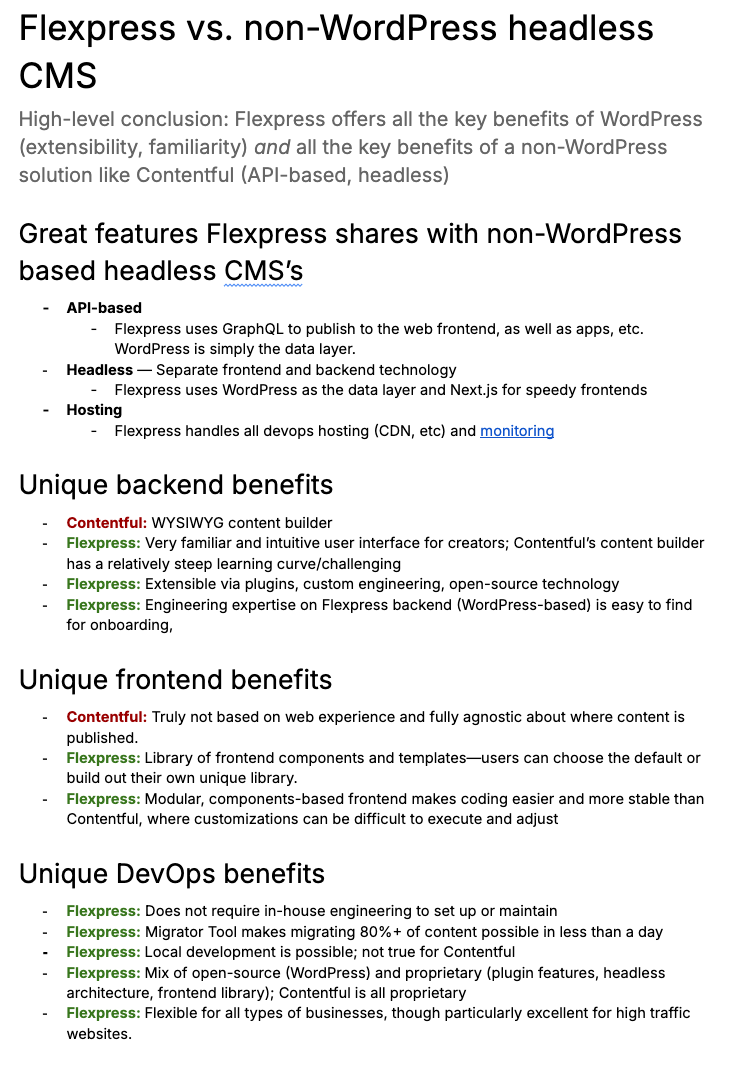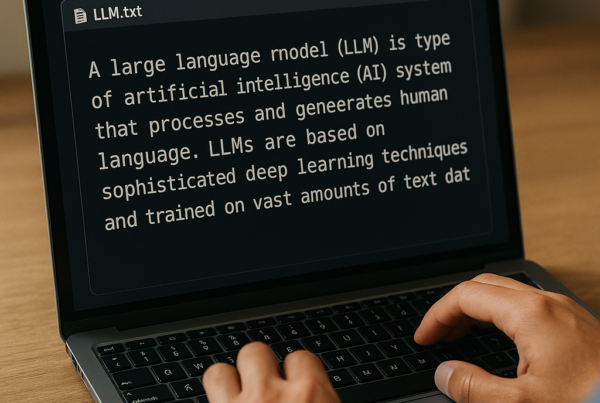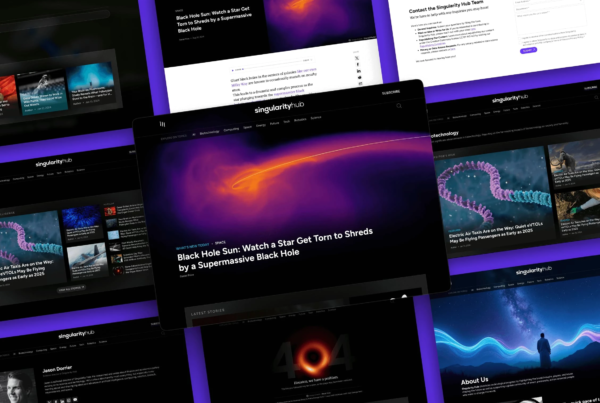Publisher-friendly guide for answering the question —> What is a headless content creation platform, and what specific benefits does it provide?
What does it mean to be a “Headless Content Creation Platform?”
—> “Headless” refers to a system where the frontend and backend are separated and communicate through APIs. This allows for greater flexibility, scalability, and speed in the development process.
—> “Content Creation” refers to the process of using software like souped-up WordPress to engage specific, large audiences.
—> “Platform” refers to the data side, where your site never goes down while remaining in compliance with modern GDPR/CCPA standards.
Why use WordPress as the underlying CMS framework?
WordPress is a powerful and widely used Content Management System (CMS) that provides a user-friendly interface for managing and organizing content. It is highly customizable, making it an ideal choice for headless architecture. Think of WordPress as “behind the stage” of a high traffic website, providing a centralized location for content storage and management before it goes out to perform (engage visitors via the frontend UI/UX).
Why use Next.js for the frontend?
Next.js is a popular React-based framework that provides server-side rendering and optimized performance. Its modular architecture makes it easy to add and remove features as needed, while its dynamic routing capabilities ensure smooth navigation and fast page loads. By using Next.js as the frontend for your website, you can provide a seamless user experience with improved performance.
Why choose GraphQL for API?
GraphQL is a query language for APIs that provides a more efficient and flexible alternative to REST APIs. It allows for precise and efficient data retrieval, reducing the amount of data transferred and improving performance. By using GraphQL as the API for high traffic websites, you can provide seamless and efficient communication between the frontend and backend.
What is the data flow through a Headless Content Creation Platform?
In headless architecture, the data flow works as follows:
- The frontend, built with Next.js, makes a request to the GraphQL API for the necessary data.
- The API, built with GraphQL, communicates with the WordPress backend to retrieve the requested data.
- The API then sends the data back to the frontend, where it is rendered and displayed to the user.

By following this data flow, high traffic websites can provide a seamless and efficient user experience, while also allowing for easy customization and scalability.
Off the cuff | Content creation platform codebase ideology from the perspective of an engineer seasoned in digital experience management
As a software engineers with extensive experience in the media industry, we understand the importance of providing a top-notch user experience for websites. That is why we decided to build Organic’s headless architecture using WordPress as editorial-facing content management experience, and Next.js as the frontend UI/UX — all connected via a GraphQL API. This combination offers many benefits for both software engineers and end users of high traffic websites, providing a modern and efficient solution that meet both of their needs.
The headless, or “decoupled,” architecture allows for separation of the frontend and backend of a high traffic website. The result is 100% uptime, with the editorial interface managed by souped up WordPress, and the frontend modernized thanks to React and Next.js. The decoupling creates faster performance, increased flexibility, and improved user experience.
The use of WordPress as the content publishing interface provides a vast array of tools and features for managing and publishing content, while Next.js is a modern frontend framework that offers a seamless user experience with fast and efficient performance.

The GraphQL API also plays a crucial role in this architecture, making integration with other systems and tools much easier. This allows for quick and effortless additions of new features and functionality to the website, without affecting performance or user experience. The GraphQL API also enhances website performance by allowing the frontend and backend to operate independently, without interfering with each other.
Software engineers can take advantage of the benefits of the headless architecture, such as quick redesign development and the ability to add new features to either the frontend or the backend independently. This level of flexibility and ease of maintenance makes it a great option for streamlining the software engineering workflow and building high-performing websites.
Headless Content Creation Platform: Benefits for high-traffic websites
In addition to benefits for software engineers, the headless architecture also provides numerous benefits for high-traffic websites. For example, improved performance across all known and accepted evaluation criteria: e.g. Google Lighthouse Scores, CLS Scores, Domain Rating, Site Speed. With Organic’s headless architecture, a high traffic website can essentially focus on delivering multimedia content quickly and efficiently, while also providing a seamless user experience — regardless of the device or connection speed. This is particularly important for websites that serve large amounts of multimedia content.
Because high traffic websites need to reach a wider audience to grow their business, the headless architecture offers numerous syndication and SEO benefits. By providing a faster and more optimized user experience, the website attains improved search engine rankings and increased visibility, leading to increased traffic, further engagement, and more revenue.
In conclusion, the headless architecture using WordPress as a CMS and Next.js as the frontend with a GraphQL API provides a modern and efficient solution for websites and software engineers.
With improved performance, greater flexibility, and a positive user experience, websites can reach a wider audience, increase engagement, and grow their business over time. The headless architecture ensures that websites have the best and most customizable tool available as a CMS and provides end-users with a smooth, modern, and fun experience via their preferred method of browsing.





